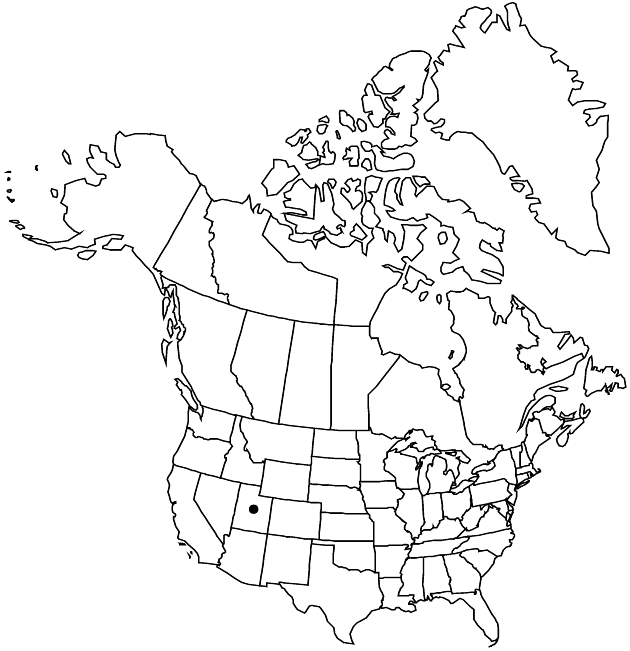Townsendia aprica
Brittonia 20: 375, fig. 1. 1968.
Perennials, 1–2 cm (± pulvinate). Stems ± erect; internodes 0.1–1 mm, ± strigose. Leaves basal and cauline, blades ± spatulate, 5–8 (–16+) × 1.5–2.5+ mm, little, if at all, fleshy, faces ± strigose. Heads ± sessile. Involucres ± campanulate, 4–8+ mm diam. Phyllaries 24–40+ in 4+ series, the longer ± lanceolate, 4–7 mm (l/w = 2.5–5), sometimes glabrate, apices acute to attenuate, abaxial faces usually sparsely strigillose or glandular-puberulent. Ray-florets 13–21; corollas yellow adaxially, laminae 4–6+ mm, glandular-puberulent abaxially. Disc-florets 25–60+; corollas 4–5+ mm. Cypselae 2–2.5 mm, faces hairy, hair tips glochidiform; pappi persistent; on ray cypselae 10–12 lanceolate to subulate scales 0.5–1+ mm; on disc cypselae 20+ subulate to setiform scales 4–5+ mm. 2n = 18.
Phenology: Flowering Apr–May.
Habitat: Clay hills
Elevation: 1500–2500 m
Discussion
Of conservation concern.
Townsendia aprica is questionably distinct from T. jonesii. Townsendia aprica is in the Center for Plant Conservation’s National Collection of Endangered Plants.
Selected References
None.
Lower Taxa
"broader" is not a number.
